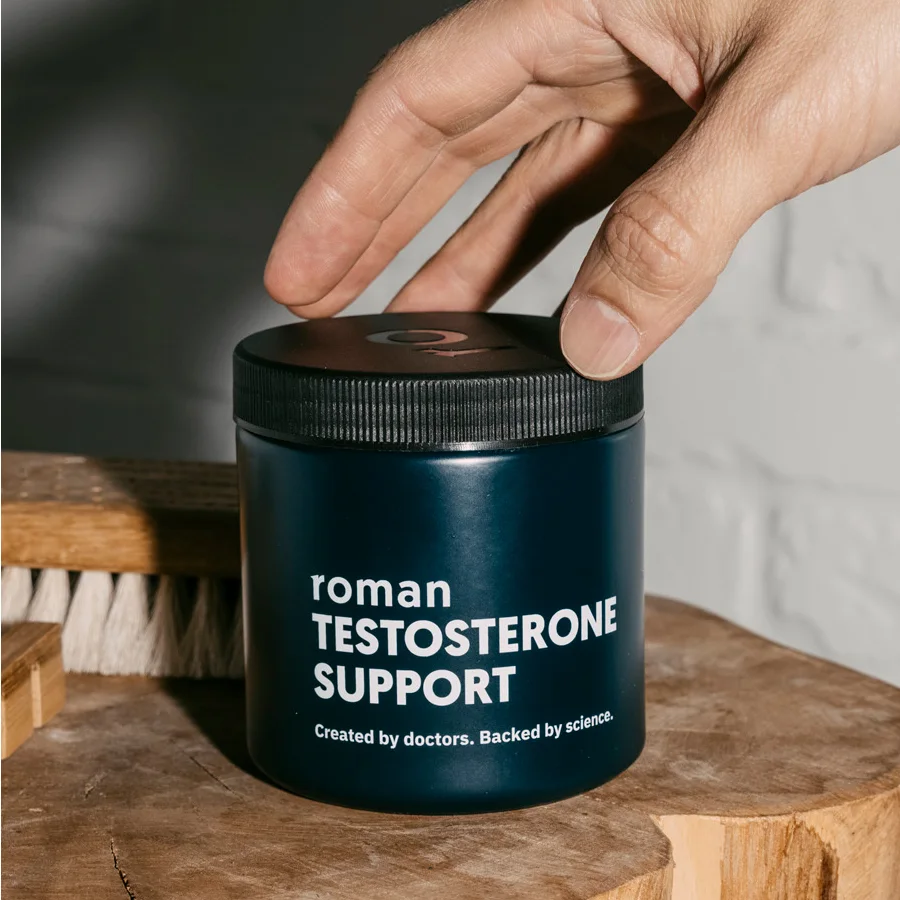Here's what we'll cover
Here's what we'll cover
Here's what we'll cover
The human body relies on massive networks of chemical signals to keep you functioning well and feeling good. Our hormones are just one of these many signals, but they’re extremely important—if our levels get out of whack, it can cause a whole cascade of responses in the body. This article will look at one group of hormones called androgens and what can happen when levels are too high (or low) in men and women.
What are androgens?
Androgens are a group of hormones with a wide range of functions. Testosterone (T), dihydrotestosterone (DHT), dehydroepiandrosterone (DHEA), and androstenedione are all androgen hormones. They are often referred to as “male hormones” since they’re essential for male sexual development and are present at much higher levels in biological males. However, androgens are essential in women, too.
Testosterone is the primary male sex hormone. It’s made in the testes in men and the ovaries in women. While men have 20–25 higher levels of testosterone than women, testosterone balance plays an important role in the health of both genders (Fabbri, 2016).
DHT is another important androgen. It’s made from testosterone by a chemical (enzyme) called 5-alpha-reductase. DHT is vital during fetal development and puberty; however, in adulthood, it can contribute to male pattern baldness and an enlarged prostate, also known as BPH (benign prostatic hyperplasia).
You may have seen the androgen DHEA in supplements. It’s a precursor to testosterone and related androgens (meaning it converts into these other hormones in the body). While it has been touted as beneficial for muscle strength, anti-aging, and inflammation, the science is not there yet, and more studies are needed to support the benefits of taking DHEA supplements (Rutkowski, 2014).
What do androgens do?
Androgens are a key player in developing male genitals and sex organs like the penis, scrotum, and prostate. Teenagers are well acquainted with the changes androgens bring during puberty, like voice deepening, acne, and hair growth changes. But androgens are important even in adulthood because of the wide range of effects they can have on the body, including effects on (Nassar, 2022):
Erectile function
Sperm production
Bone density and muscle mass
Facial and body hair
Mood regulation
Red blood cell production
What if you have excessive androgens?
Given all of the things androgens do, it’s not surprising that abnormal androgen levels can cause many different symptoms in both males and females.
High androgens in men
Androgens levels rarely get too high in men. When it does happen, it’s usually because of medications or supplements. Abusing natural androgens and synthetic androgenic steroids (also called anabolic steroids) is a common doping technique used by athletes worldwide. However, using androgens to boost performance is not without its risks. Side effects of high androgen levels include (Ganesan, 2021):
Acne, including body acne (aka “backne” when it appears on the back)
Mood changes
Weight gain
Decreased testicle size
Breast enlargement (gynecomastia)
Increased cholesterol levels
Higher risk of heart disease (cardiovascular disease)
High androgens in women
Androgen excess (hyperandrogenism) in women is most commonly due to polycystic ovary syndrome (PCOS), which affects up to 12% of women. Medications and tumors in the ovaries or adrenal glands can also lead to hyperandrogenism. Some of the signs of high androgen levels include (Rasquin, 2021):
Hirsutism (excess body and facial hair)
Male-pattern baldness (androgenic alopecia)
What if androgen hormone levels are too low?
Like elevated levels, androgen deficiency may also cause some unwanted symptoms.
Low androgens in men
Men with low androgen levels (hypogonadism) can experience a wide range of side effects, including (Sizar, 2021):
Decreased libido
Erectile dysfunction (including decreased morning erections)
Fertility issues (e.g., low sperm count)
Fatigue
Depressed mood
Increased body fat
Loss of muscle mass
Loss of bone mass (osteoporosis)
Anemia
Low androgens in women
While androgens are not the primary sex hormone in women, an imbalance can still affect a woman’s health and well-being. Symptoms of lower levels of androgens in women may include (Wierman, 2014):
Decreased sex drive/low sexual desire
Decreased satisfaction with sex
Infertility
Irregular menstrual cycles
Weaker bones and bone density loss (osteoporosis)
What happens to your androgen levels as you age?
Androgen production goes down in both men and women over time. Studies show that 40% of men over 45 and 50% in their 80s have low testosterone levels (Sizar, 2021). There’s a decline in women too, with androgen levels continuing to drop after menopause (Haring, 2012).
If your androgen levels are too high or too low, you may want to consider treatment depending on the cause and how you feel. Sometimes simple lifestyle changes like diet and exercise can help with certain symptoms. Your healthcare provider can help guide you and provide treatment if needed.
DISCLAIMER
If you have any medical questions or concerns, please talk to your healthcare provider. The articles on Health Guide are underpinned by peer-reviewed research and information drawn from medical societies and governmental agencies. However, they are not a substitute for professional medical advice, diagnosis, or treatment.
References
Fabbri, E., An, Y., Gonzalez-Freire, M., et al. (2016). Bioavailable testosterone linearly declines over a wide age spectrum in men and women from the Baltimore longitudinal study of aging. Journals of Gerontology Series A: Biological Sciences and Medical Sciences , 71 (9), 1202-1209. doi:10.1093/gerona/glw021. Retrieved from https://pubmed.ncbi.nlm.nih.gov/26921861/
Ganesan, K., Rahman, S., & Zito, P. M. (2021). Anabolic steroids. StatPearls . Retrieved on Mar. 16, 2022 from https://www.ncbi.nlm.nih.gov/books/NBK482418/
Haring, R., Hannemann, A., John, U., et al. (2012). Age-specific reference ranges for serum testosterone and androstenedione concentrations in women measured by liquid chromatography-tandem mass spectrometry. The Journal of Clinical Endocrinology and Metabolism , 97 (2), 408–415. doi:10.1210/jc.2011-2134. Retrieved from https://pubmed.ncbi.nlm.nih.gov/22162468/
Nassar, G. N. & Leslie, S. W. (2022). Physiology, testosterone. StatPearls . Retrieved on Mar. 16, 2022 from https://www.ncbi.nlm.nih.gov/books/NBK526128/
Rasquin Leon, L. I., Anastasopoulou, C., & Mayrin, J. V. (2021). Polycystic ovarian disease. StatPearls . Retrieved on Mar. 16, 2022 from https://www.ncbi.nlm.nih.gov/books/NBK459251/
Rutkowski, K., Sowa, P., Rutkowska-Talipska, J. et al. (2014). Dehydroepiandrosterone (DHEA): hypes and hopes. Drugs, 74 , 1195–1207. doi:10.1007/s40265-014-0259-8. Retrieved from https://pubmed.ncbi.nlm.nih.gov/25022952/
Sizar, O. & Schwartz, J. (2021). Hypogonadism. StatPearls . Retrieved on Mar. 16, 2022 from https://www.ncbi.nlm.nih.gov/books/NBK532933/
Wierman, M. E., Arlt, W., Basson, R. et al. (2014). Androgen therapy in women: a reappraisal: an Endocrine Society clinical practice guideline. The Journal of Clinical Endocrinology & Metabolism , 99 (10), 3489–3510. doi:10.1210/jc.2014-2260. Retrieved from https://pubmed.ncbi.nlm.nih.gov/25279570/










